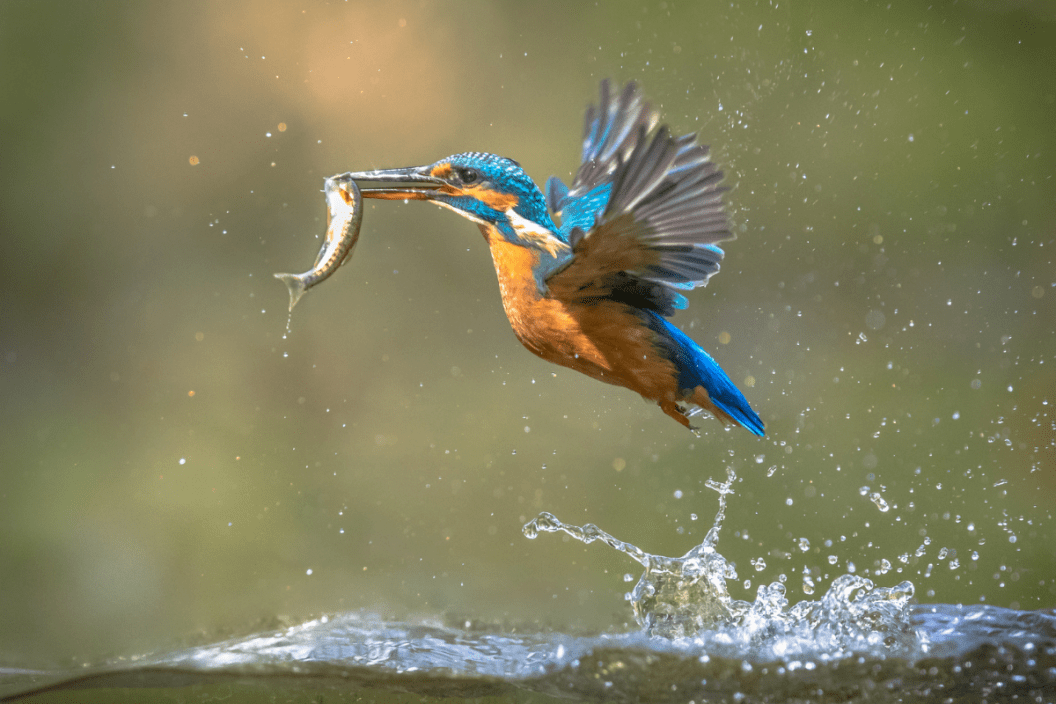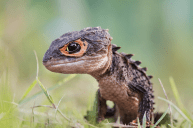Why are some animals blue? What kinds of animals can be blue?
Beautiful blue pigments are not produced by the majority of animals with normal melanin in the animal kingdom. This is why you don't see a blue cat or dog walking around. A blue color, both light blue and dark blue, is generated through structural coloration effects like iridescence and selective reflection. This means that true blue pigment isn't produced with melanin, although anthocyanins are responsible for blue or purple fruits and vegetables. Some frogs and nudibranchs are bright blue, but this is why blue butterflies and birds outnumber reptiles, amphibians, and creatures with scales, skin, or hair in most of North America and South America.
1. Mandarin Fish
https://www.instagram.com/p/CG4ifLNhVuu/
The mandarin fish is found throughout the Pacific, from the Ryukyu Islands to Australia and even Indonesia. These blue animals are small, colorful members of the dragonet family that are popular in the saltwater aquarium trade. Despite their ubiquity in the aquarium trade, they are difficult to keep due to their very specialized feeding needs. Some fish never adjust to tank life and will only consume live amphipods and copepods.
2. Blue Jay
https://www.instagram.com/p/CPE2iAbg6gc/
The blue jay is one of the most vocal and beautiful blue birds in eastern backyards and woodlots. It is intelligent and flexible, and can eat practically everything. Blue Jays have bright blue feathers and can imitate the scream of a Red-shouldered Hawk and generate a variety of melodic sounds. The nest (constructed by both sexes) is a large open cup made of twigs, grass, weeds, bark strips, and moss.
3. Blue Iguana
https://www.instagram.com/p/CKtxSc-JDA4/
The skin of the Grand Cayman blue iguana is dusky-blue to gray, with cross stripes that are often barely visible. The eggs incubate at about 91 degrees Fahrenheit (30 to 33 degrees Celsius). These ground-dwelling lizards are diurnal, spending the day basking in the sun to warm up. Scrub woodlands, semi-deciduous forests, and dry-to-subtropical forests are all home to the species.
4. Blue Morpho Butterfly
https://www.instagram.com/p/CGFI7GEAtNa/
The blue morpho butterfly is one of the world's largest butterflies. It gets its brilliant, iridescent blue hue from minute scales on the backs of its wings. The Blue Morpho's wings have a dull brown underside with numerous eyespots. When its wings are closed, the eyespots serve as camouflage against predators.
5. Blue-Headed Agama
https://www.instagram.com/p/BMd6zMFDlGo/
Blue-headed lizards, sometimes known as Southern Tree Agamas, have adapted to residential gardens. When breeding, the males are very colorful, with their brilliantly blue heads standing out. During the day, they are active, and at night, they sleep in tree hollows or under loose bark.
6. Blue Poison Dart Frog
https://www.instagram.com/p/CDJ5P8yqRsO/
RELATED: 14 Radiant Red Animals That Are Hard to Miss
Only a few isolated rainforest regions in Suriname and northern Brazil are home to blue poison dart frogs. Their skin has a natural toxin that can paralyze or even kill predators. For ages, indigenous civilizations such as Colombia's Chocó have utilized frog poison to coat the point of their blow darts.
7. Coral Reefs
https://www.instagram.com/p/CPWemGAr9aK/
Heliopora coerulea is a soft coral as opposed to a stony coral. It is the sole surviving member of its family, Helioporidae. Its family was formerly a prominent coral in the world's waters. Its extinction and that of all its relatives was caused by enormous cooling of the waters during the last ice age, not by global warming. This Coral is simple to care for, making it an excellent beginner's coral.
8. Blue Whale
https://www.instagram.com/p/CNAzLY0l7BW/
The blue whale is the world's largest animal, weighing up to 200 tons (approximately 33 elephants). The heart of a blue whale is the size of a Volkswagen Beetle. Its stomach can carry one ton of krill, and it requires approximately four tons of krill per day. They are the most audible animals on the planet, even louder than a jet engine. Their calls can be heard at 188 dB, while a jet can be heard at 140 dB. Their low-frequency whistle, which can be heard for hundreds of miles, is most likely intended to attract other blue whales.
9. Blue Starfish
https://www.instagram.com/p/B8URY7Cq4eI/
The Blue Linckia Sea Star is a blue-colored animal that can be seen foraging for food in the sunlit sections of the reef and reef fringe. It is also known as the Comet Sea Star or the Blue Lincke Star when it is blue-green. Thyca crystallina, a little parasitic snail that may be a sign of life in the wild, should be carefully watched in the home aquarium.
10. Blue Sea Slug
https://www.instagram.com/p/BudPDiDgEhM/
The blue glaucus is rarely longer than 3 centimeters. It is a hermaphrodite, meaning it produces both eggs and sperm. It stores venomous nematocysts in preparation for an attack on its chosen victim, Portuguese man o' wars. The conservation status of the blue dragon is unknown, especially given the species' pelagic habit in the open ocean. While floating in open water, the species can avoid both flying and swimming predators by "countershading." The grayish rear of the animal mixes in with the brilliant water surface, hiding it from predators below.
11. Crayfish
https://www.instagram.com/p/CPTVEoFrSOx/
The Electric Blue Crayfish is native to Florida, notably the places east of the St. Johns River, various sites south of Levy and Marion Counties, and even the Florida Keys. This crayfish is also known as the Blue Crayfish, Everglade Crayfish, and Florida Crayfish. The lack of a specific gene that generates the crayfish's dazzling blue coloration is the cause of their brilliant blue hue. With adequate care, these crayfish can live for 5 or 6 years in a freshwater aquarium. They are incredibly energetic creatures who enjoy exploring and do not spend their entire lives under rocks.
Share your favorite blue animal on the Wide Open Pets Facebook page!




